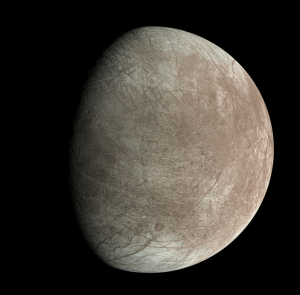5 Things to Know About NASA’s Tiny Twin Polar Satellites
Called PREFIRE, this CubeSat duo will boost our understanding of how much heat Earth’s polar regions radiate out to space and how that influences our climate. Twin shoebox-size climate satellites will soon be studying two of the most remote regions on Earth: the Arctic and Antarctic. The NASA mission will measure the amount of heat […]

Called PREFIRE, this CubeSat duo will boost our understanding of how much heat Earth’s polar regions radiate out to space and how that influences our climate.
Twin shoebox-size climate satellites will soon be studying two of the most remote regions on Earth: the Arctic and Antarctic. The NASA mission will measure the amount of heat the planet emits into space from these polar regions — information that’s key to understanding the balance of energy coming into and out of Earth and how that affects the planet’s climate.
The data from the Polar Radiant Energy in the Far-InfraRed Experiment (PREFIRE) mission will help improve our understanding of the greenhouse effect at the poles — specifically, the capacity of water vapor, clouds, and other elements of Earth’s atmosphere to trap heat and keep it from radiating into space. Researchers will use this information to update climate and ice models, which will lead to better predictions of how sea level, weather, and snow and ice cover are likely to change in a warming world.
Each of PREFIRE’s cube satellites, or CubeSats, will use a thermal infrared spectrometer to measure the heat, in the form of far-infrared energy, radiated into space by Earth’s surface and atmosphere.
Here are five things to know about this small but mighty mission:
1. The PREFIRE CubeSats will provide new information on how Earth’s atmosphere and ice influence the amount of heat being radiated out to space from the Arctic and Antarctic.
The CubeSats will gather data over the poles using sensors that are sensitive to 10 times more infrared wavelengths than any similar instrument. Information gathered by the mission will advance our understanding of when and where the poles shed heat into space, as well as why the Arctic has warmed more than 2½ times faster than the rest of the planet since the 1970s.
2. This mission will focus on the far-infrared portion of the heat Earth emits into space.
Just beyond the visible part of the electromagnetic spectrum sits the infrared, a spectrum of longer-wavelength light that can be sensed as heat. Essentially all of Earth’s heat emissions happen at infrared wavelengths between 4 and 100 micrometers. At the planet’s cold polar regions, 60% of the heat emissions occur at far-infrared wavelengths (longer than 15 micrometers). Researchers have relatively little data on which parts of the Arctic and Antarctic are shedding this heat. PREFIRE will help address this lack of knowledge, giving scientists a better idea of how efficiently far-infrared heat is emitted by things like snow and sea ice, and how clouds influence the amount of far-infrared radiation that escapes to space.
3. Data from PREFIRE will help improve polar and global climate models.
By filling in gaps in our knowledge of Earth’s energy budget, PREFIRE will sharpen our understanding of what drives the loss of polar ice on land and sea, and related questions of sea level rise. This will help researchers better predict how the heat exchange between Earth and space will change in the future, and how those changes will affect things like ice sheet melting, atmospheric temperatures, and global weather. PREFIRE data will be available to the public through NASA’s Atmospheric Science Data Center.
4. The PREFIRE CubeSats are designed to answer critical questions using a platform that’s lower-cost than a full-size satellite.
The PREFIRE CubeSats use advances in spectrometry to measure processes associated with ice melt and formation, snow melt and accumulation, and changes in cloud cover. A single satellite that revisits the same region of Earth every several days can monitor seasonal changes that researchers can use to improve climate models. But following the interactions between Earth’s surface and atmosphere, such as the amount of cloud cover temporarily effecting the temperature of the area beneath it, requires more frequent measurements. Two satellites in asynchronous near-polar orbits — passing over a given spot on Earth at different times, looking at the same area within hours of each other — could catch some of these shorter-time-scale phenomena.
5. The PREFIRE mission is helping to train the next generation of satellite climate scientists.
NASA developed PREFIRE with the University of Wisconsin-Madison, including team members from the universities of Michigan and Colorado. The mission engages a diverse group of undergraduate and graduate students, who make up a significant portion of the science team.
More About the Mission
NASA’s Jet Propulsion Laboratory manages PREFIRE for the agency’s Science Mission Directorate and provided the spectrometers. Blue Canyon Technologies built the CubeSats and the University of Wisconsin-Madison will process the data the instruments collect. The launch services provider, Rocket Lab USA Inc. of Long Beach, California, will launch both PREFIRE CubeSats from Rocket Lab Launch Complex 1 in New Zealand.
To learn more about PREFIRE, visit:
https://science.nasa.gov/mission/prefire/
News Media Contacts
Jane J. Lee / Andrew Wang
Jet Propulsion Laboratory, Pasadena, Calif.
818-354-0307 / 626-379-6874
jane.j.lee@jpl.nasa.gov / andrew.wang@jpl.nasa.gov
Karen Fox / Elizabeth Vlock
NASA Headquarters, Washington
202-358-1100 / 202-358-1600
karen.c.fox@nasa.gov / elizabeth.a.vlock@nasa.gov
2024-067
Share
Details
Related Terms
What's Your Reaction?



















.jpg?#)



































